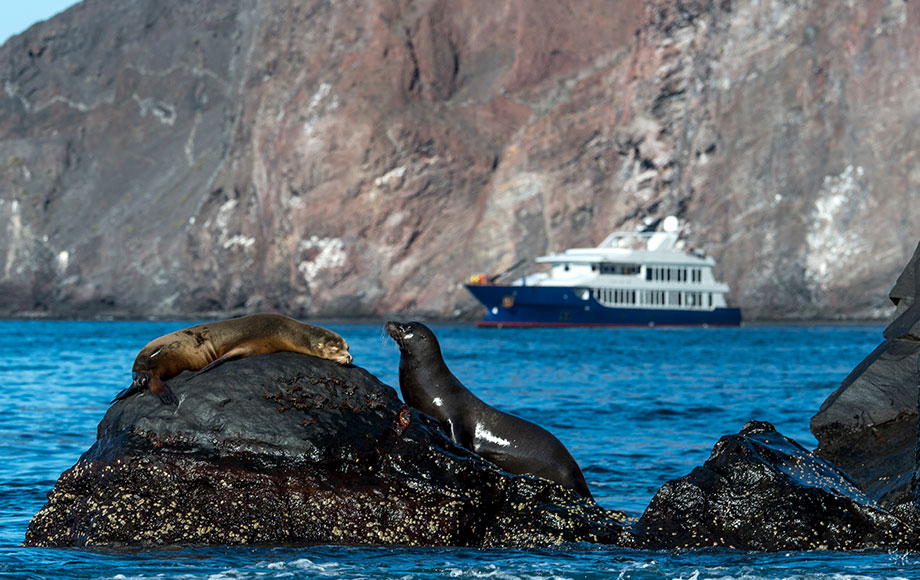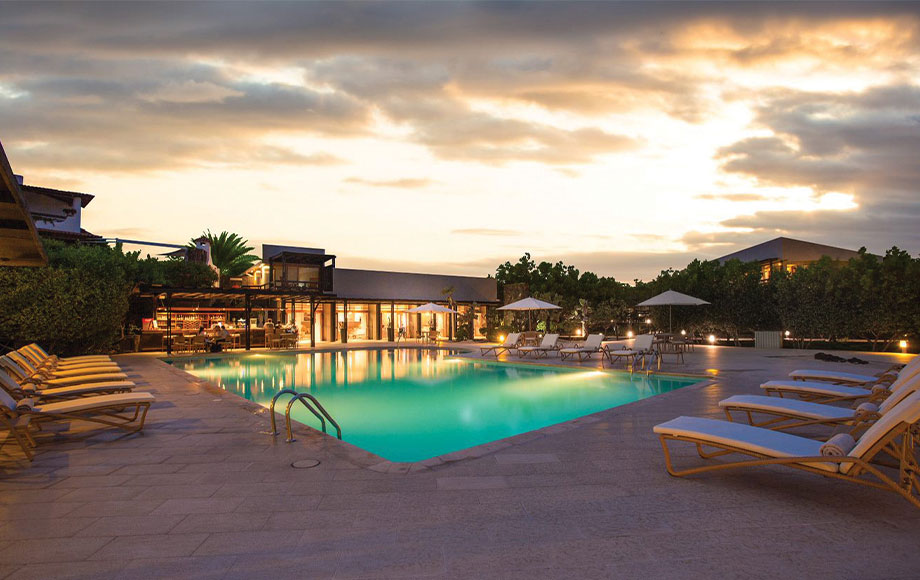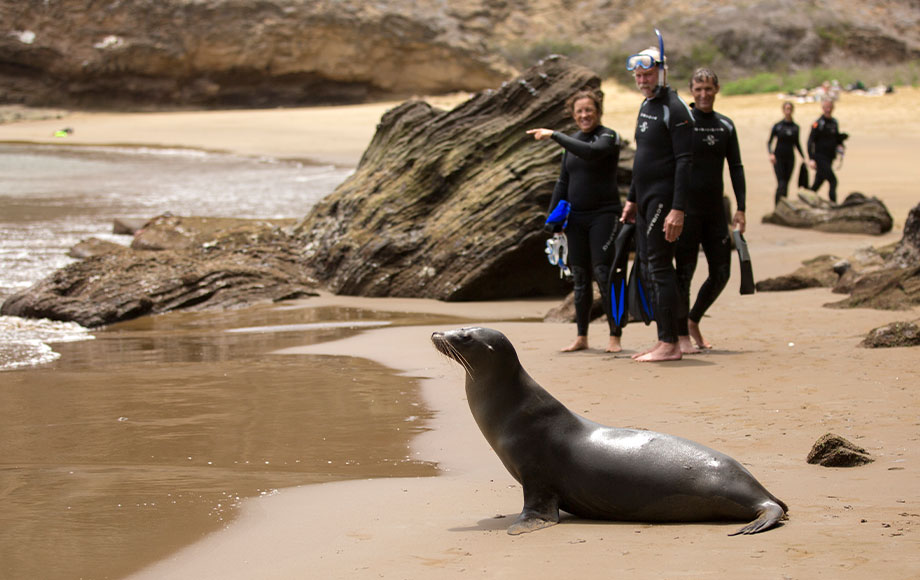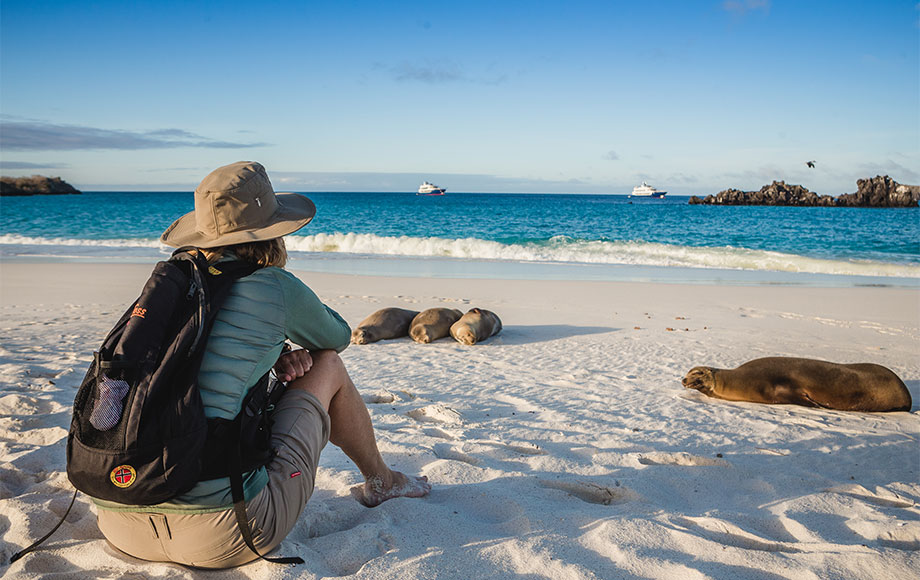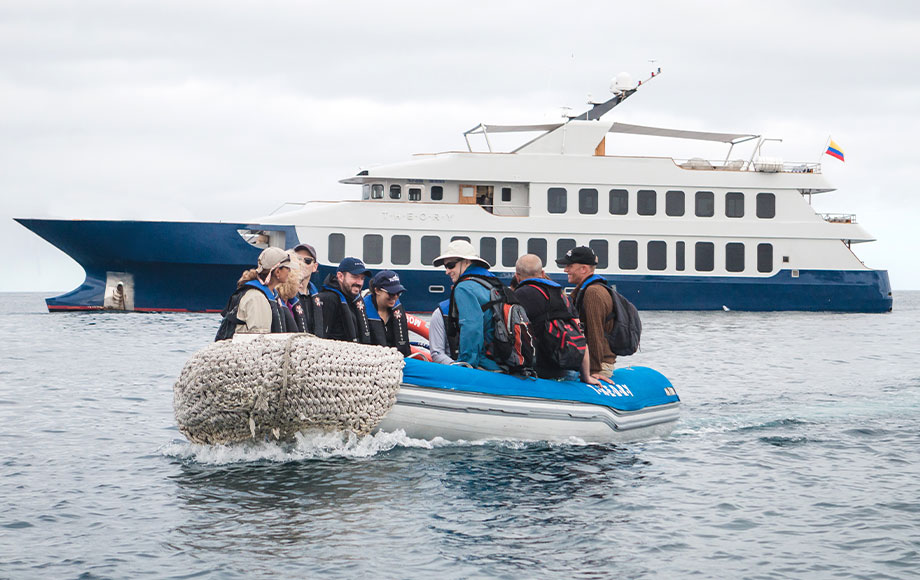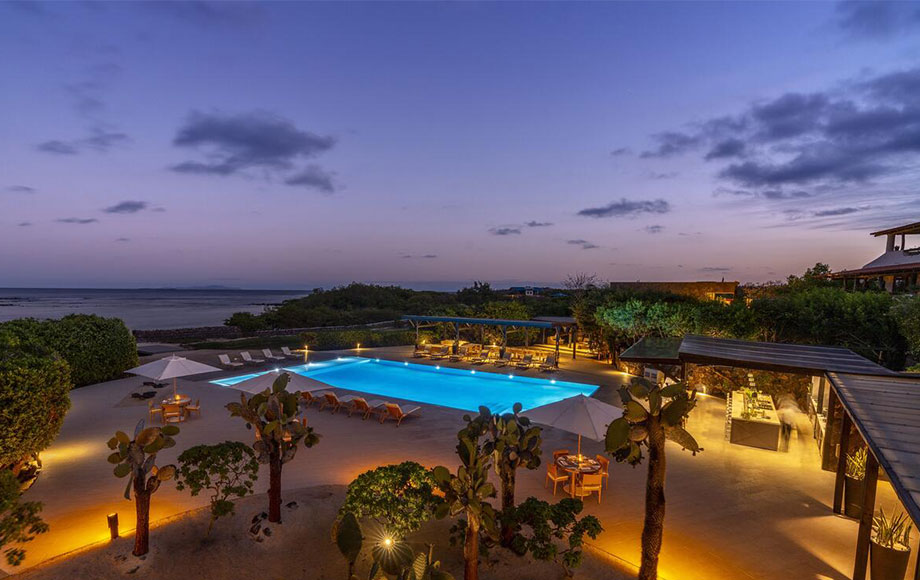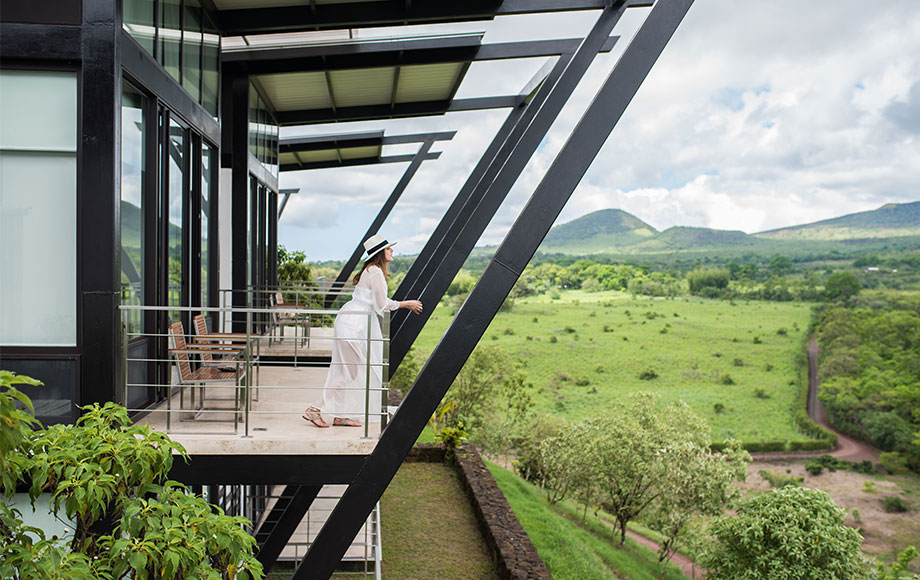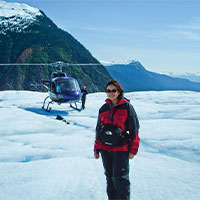Embark on an unforgettable journey exploring the stunning wildlife and scenery of the Galapagos Islands.
Remote and starkly beautiful the Galapagos Archipelago is filled with unique and diverse species. Formed by volcanic activity, the Galapagos are one of the most fascinating zoological, geological and botanical areas on Earth.
Located 1,000km west off the coast of Ecuador, the archipelago is made up of 13 main islands and hundreds of small rocks and islets, covering just 518 square kilometres. Due to its biodiversity however, the entire region is protected as a World Heritage Site.
The islands can be explored in two ways; by staying at one of the permanent hotels on the islands and enjoying day trips to neighbouring islands, or on a sensational cruise travelling from island to island and dropping anchor wherever that may be.
Natural Focus specialised in luxury, small-ship cruises. From the comforts of your vessel, enjoy daily excursions on shore with experienced guides, walking amongst sea lions, frigate birds and iguanas. Kayaking and snorkelling excursions are also very popular, allowing you to get up close to marine life including turtles and a myriad of fish species. Each of the 13 major islands of the archipelago each offer unique attractions.
The islands were made famous by Charles Darwin after he published his ground-breaking “On the Origin of Species” in November 1859. Since then they have inspired explores and visitors of all ages to explore their dramatic volcanic landscapes, crystal clear waters and unique wildlife.
For information on Ecuador, please click here.
There are two ways to explore the Galapagos
Small Ship Cruising
Exploring the Galapagos Islands on a luxury cruise ship is the best way to experience all this remarkable archipelago has to offer. Follow is the footsteps of pioneering explorers and naturalist Charles Darwin as you cruise from island to island discovering iconic wildlife and geological wonders.
From your cruise ship spend your days exploring the different islands on guided walking excursions, kayaking, swimming or snorkelling. It’s always important to watch where you place your feet in case you stand on a sunbaking land or marine iguana. Snorkelling is a favourite activity amongst travellers as you will often see curious sea lions within touching distance.
In between excursions, guests return to the vessel for a delicious lunch. There is always time to relax onboard, interact with fellow guests or listen to an insightful lecture from one of the naturalist guides. At the end of the day, enjoy a drink with fellow travellers as the sunset goes down before relishing another superb meal prepared fresh by the expert chefs. If weather conditions permit, stargazing is always a popular after dinner activity.
Lodge based
If cruising doesn’t float your boat, the other way to explore the Galapagos Islands is from the comforts of a luxury lodge. There are a number of superb accommodations options on the islands – including both Relais & Châteaux and National Geographic Unique Lodges of the World status properties. These luxury lodges have their own private yachts for day-trip exploration of the islands, as well as kayaks and mountain bikes. By staying at a lodge, your itinerary is far more flexible – you can do as much or as little as you like.
The other exciting option available is an Island Hopping adventure – where guests stay at four properties on four different islands. These land-based tours may work out to be more cost-effective as they allow you to choose which optional excursions to participate in during your travels. Island hopping may also be better suited to travellers who want more flexibility over their daily itinerary and for people who are prone to seasickness. All programs utilise private speedboat transfers. It is possible to combine both cruising and island-hopping on a single visit to the Galapagos; however, departure dates will need to be carefully coordinated.
Cruises in the Galapagos
Below are some of our suggested Galapagos Islands cruises that all feature small ships or yachts allowing for a more intimate and personalised sightseeing experience. Choose from one of our featured itineraries or let us custom design a tour to suit your interests, style and budget. To find out more about the type of Galapagos Islands cruises we can put together, please contact us to speak to a consultant today.
Luxury Lodges in the Galapagos
Talk to one of our South America Experts
When is the best time to visit the Galapagos Islands?
The Galapagos Islands are a year-round destination – so there is no exact “best” time to go. However some months are more popular than others, and the seasons affect what wildlife and activities you may see and do. There are different highlights at different times of the year – whether that is mating seabirds, newly-hatched tortoises or sea lion pups enjoying their first swim in the water. Below is a more in-depth look at when to travel to the Galapagos Islands and what you might see.
Despite being the wet season, January and February are a popular time to visit. This is one of the warmest times of year and sea temperatures begin to rise. Days are usually warm and sunny, with short periods of rain. Regarding wildlife and birdlife, many birds are courting and Green sea turtles are nesting (December to May). This is one of the best times for swimming and snorkelling in the rich waters.
Historically, March is the hottest and wettest month. However, it is also an excellent time to travel as the islands are lush and there is plentiful birdlife to see. In April the rains begin to taper off. This is the time of year when the Green sea turtle hatchlings emerge (an incredible sight to see) – keep in mind however that birds of prey will be keeping an eye on these young turtles too. Iguana hatchlings and Nesting Waved Albatross are other highlights during this time. Snorkelling remains excellent as this time of year as the waters are still warm and clear.
June marks the change of seasons, when the Humboldt Current brings cooler conditions and water temperatures down to around 18-21°C. Days are often overcast and windy and sea conditions are generally rougher. This time of year is fantastic for see Galapagos penguins (particularly around Isabela and Fernandina islands) who love the cooler temperatures and plentiful food. July is a popular month, particular for bird lovers, as there is plenty of seabird activity. Blue-footed boobies perform fascinating mating rituals, Waved Albatross will be hatching on Espanola Island, frigatebird sightings on North Seymour Island and the famous flightless cormorants commence mating rituals. Though sea-birds remain active and humpback whale sightings are common, the highlight for August is seeing baby sea lions playing on the beaches.
September is the quietest month for travel in the Galapagos due largely to the cold temperatures and wild seas. Many cruise operators put their vessels into dry dock for maintenance. There is still plentiful wildlife activity however, and some travellers prefer this month as there are far fewer travellers.
The strong winds of previous months begin to calm down in October. Cool and dry, if swimming or snorkelling, a wetsuit is a must. November is one of the best months for swimming with young sea lions as they are only just testing their swimming capabilities for the first time. December marks the traditional start of the warmer, wetter months as well as a return to the busier months – if you wish to travel over the Christmas/New Year period, be mindful that this is one of the busiest and most popular times to visit the islands. Highlights of December include marine and land iguanas engaging in mating rituals and giant tortoise eggs begin to hatch. Swimming with sea lions (always a popular activity) is excellent as well.
Galapagos Islands FAQ’s
Galapagos Islands Overview
Why travel to the Galapagos Islands?
With its iconic wildlife, unique marine life and beautiful landscapes, the Galapagos Islands are a UNESCO World Heritage Site and one of the most fascinating places on Earth to visit.
What can I combine the Galapagos with?
The Galapagos Islands are easily combinable with mainland Ecuador. The country is home to fascinating cultures, beautiful colonial cities, Amazon rainforest experiences and the marvellous Andes Mountains. Alternatively, neighbouring Peru is another popular options. Peru has a handful of superb Amazonian eco-lodges and luxury riverboats, the Sacred Valley of the Incas and of course Machu Picchu – the mesmerising 15th century “Lost City of the Incas”.
How do you get to the Galapagos Islands?
There are daily flights from Ecuador’s two biggest cities – Quito and Guayaquil – to Baltra Island, just off Santa Cruz Island, and to Puerto Baquerizo Moreno on San Cristóbal Island.
US – Ecuador is very easy to fly to from the United States. There are plenty of direct flights to either Quito or Guayaquil from a number of US cities. Airlines that fly between the countries include United Airlines, American Airlines and Latam Airlines.
UK/Europe – There are a number of countries that operate direct flights into Ecuador from Europe including France and the Netherlands. Alternatively Latam fly to European countries such as Germany and Spain.
